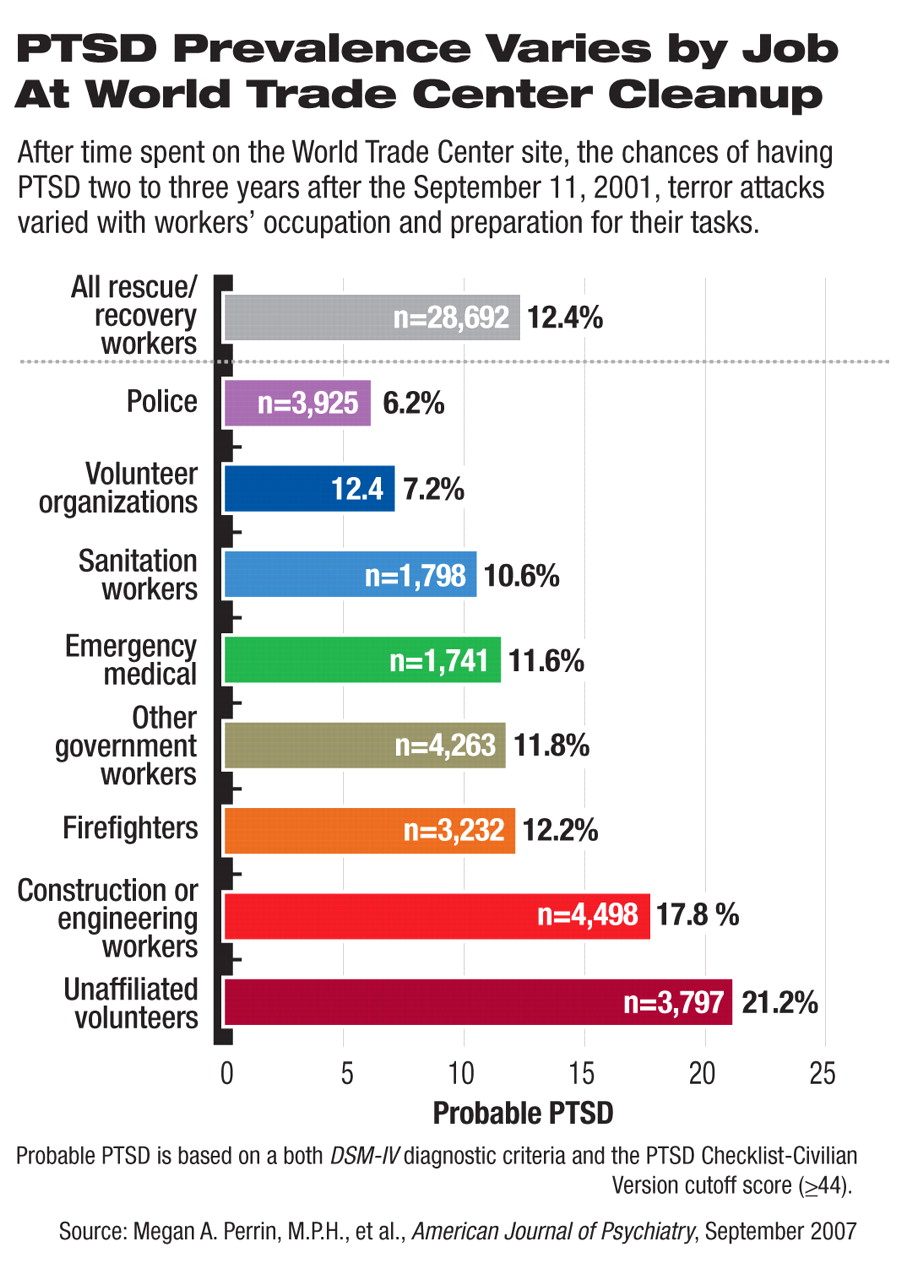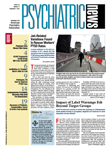Training and experience go a long way in reducing the aftereffects of traumatic stress, according to a study of thousands of workers who toiled at the World Trade Center site in Manhattan in the nine months following the September 11, 2001, terror attacks.
Two to three years after the event, police officers had the lowest prevalence of posttraumatic stress disorder (PTSD) among the eight occupational groups represented among the workers, wrote Megan Perrin, M.P.H., of the Nathan S. Kline Institute for Psychiatric Research in Orangeburg, N.Y., and colleagues in the September American Journal of Psychiatry. The researchers used both the PTSD Checklist–Civilian Version and DSM-IV diagnostic criteria to evaluate PTSD.
The prevalence of current probable PTSD among the 28,962 workers enrolled in the World Trade Center Health Registry averaged 12.4 percent. Police officers showed a rate of 6.2 percent, while firefighters, emergency medical or disaster personnel, and other employees of government agencies were twice as likely to have PTSD.
Construction or engineering crew members (17.8 percent) and unaffiliated volunteers (21.2 percent) recorded the highest rates of PTSD. The latter category included people such as clergy, white-collar workers, and others who reported occupations not directly related to rescue and recovery work.
Probability of PTSD rose for all occupations other than police as the time they worked on the site increased. Not surprisingly, probabilities were higher for those who began work in the first week after the attack than among those who started after September 18.
Stepping outside of one's usual job boundaries added measurable stress, too, wrote Perrin. PTSD risk increased for firefighters doing light construction work, for sanitation workers doing search and rescue work, and for police and emergency medical personnel fighting fires.
“Novelty does add a degree of stress,” said emergency room psychiatrist Anthony Ng, M.D., who was medical director of Disaster Psychiatry Outreach in New York at the time of the terror attacks. He is also a member and former chair of APA's Committee on Psychiatric Dimensions of Disasters.“ In simulations of job tasks, people show more stress if they're asked to do something different.”
“Prior training or experience may protect against the psychological distress associated with disaster work,” wrote Perrin, echoing results of previous research by others.
However, that did not explain all the disparity between the police and other first responders, she said. After Hurricane Katrina, for instance, the prevalence of PTSD among New Orleans police officers was 19 percent, close to the 22 percent reported for firefighters, although local conditions may have influenced those outcomes.
Another factor that may account for some of the difference is that police may underreport symptoms, fearing career repercussions, Perrin speculated. Or perhaps the police force may have more rigorous pre-employment screening that may produce more resilience than workers in other categories.
In addition, firefighters and paramedics, who lost 343 of their comrades when the towers collapsed, may well have identified with the lost victims or felt bereaved, adding to their psychological burden, she added. (Fires burned at the site for 99 days after the attacks.)
Police and firefighters also have different cultures and working styles, which may explain some variation in their response to stress, said Ng. Police officers rely on authority and force to do their job, while firefighters and medics rely on personality and persuasion, he said. That may increase the stress on their psychological resources.
“Cops work alone or with a partner, while firefighters work in groups and live together on the job,” he suggested. “That might increase their camaraderie and the hurt they felt after September 11.”
Other workers may not have received the organizational support, mental health services, or the public recognition that are available to police and firefighters, all of which may have increased their distress.
Interventions targeted at specific occupational groups who work at major disasters might alleviate the psychological burden that comes with their participation, wrote Perrin and colleagues. “Disaster preparedness training and shift rotations to enable a shorter duration of service at the site may reduce PTSD among workers and volunteers in future disasters.”
Preparation does provide some buffer for future events, agreed Ng.
“But that means ongoing training, not practicing once a year,” he said. “You have to know what to expect and not be surprised, even when things are at their most chaotic.”
“Differences in PTSD Prevalence and Associated Risk Factors Among World Trade Center Disaster Rescue and Recovery Workers” is posted at<ajp.psychiatryonline.org> under the September issue. ▪

